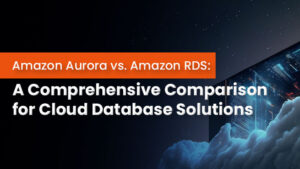
How to Apply Cybersecurity in Fintech for User Protection
Introduction As fintech evolves, it brings innovative financial solutions that enhance user convenience, such as mobile banking, digital lending, and secure payments. However, as financial
Exclusive Discount Offer: Unlock 3-Months of IPSpecialist’s Premium Plan for Just $59.99 $15.99! Save $44 Today! Subscribe Now!

Introduction As fintech evolves, it brings innovative financial solutions that enhance user convenience, such as mobile banking, digital lending, and secure payments. However, as financial

Introduction In the realm of cloud computing, Amazon Web Services (AWS) offers a variety of managed database options that help organizations scale, secure, and optimize

Introduction In the ever-evolving landscape of cybersecurity, zero-day attacks pose a significant threat to businesses and individuals alike. A zero-day attack exploits a software vulnerability
Table of Contents
The hardware and software must be manually managed and configured for the applications to function. However, recently, things have undergone a significant transformation. How businesses plan, create, and maintain their IT infrastructure has been transformed and improved by trends like cloud computing.
IaC, or Infrastructure as Code, is an IT practice that manages and codifies the underlying software-based IT infrastructure. Instead of manually configuring individual hardware devices and operating systems, Infrastructure as Code enables development or operations teams to automatically manage, monitor, and provision resources. Programmable or software-defined infrastructure are other names for infrastructure defined as Code. In this article we will discuss about “Infrastructure as Code”.
Please visit the IPSpecialist website for further information and also check out our wide range of Cloud Computing, Cybersecurity & Networking Courses Today!
Infrastructure as Code is essentially the automated management of infrastructure. Infrastructure as Code (IaC), in contrast to interactive configuration tools or physical hardware setup, includes managing and deploying data centres through code modules. IaC refers to managing the IT infrastructure with lines of Code.
Infrastructure as Code has various advantages, from automation efficiency to its adaptability to other contemporary IT approaches.
Automated provisioning and automated management are quicker and more effective than manual approaches. This encompasses not just virtualization and supplied resources but also databases, networking, user account management, and other related services. IaC can also contain automatically scaling Code.
Instead of relying on system administrators in a DevOps environment, software developers can use Code to provision and deploy servers and apps per business practices and standards. Before operations control live deployment in production, a developer could generate a configuration file to provision and deploy a new application for testing or quality assurance.
This one is quick and easy. Like any other source code file, IaC configuration files can be versioned, providing full traceability of any configuration changes.
The one-way deployment capability of IaC is one of its aspects that can aid in enhancing security tactics. A private or public cloud is frequently used to provide and deploy computing, storage, and networking services with IaC. The same may be said of security requirements. They are simple to create and use. This would improve other solutions to avoid security gatekeeper assessment and approval for practically every security update. This would be particularly useful for infrastructures that needed several security passes due to their need for strict security.
IaC produces detailed reports and documentation of each procedure. This is another excellent IaC function that offers numerous advantages. IaC records each action, procedure, and modification, including when workers leave a company or someone is building up the code model for another individual. Every setting is monitored and tested by IaC, much like a code.
One of the most used IaC tools available is Terraform. It is an open-source project that supports all of the most well-known cloud platforms, including:
Additionally, it supports a wide range of service providers, including DigitalOcean, GitHub, Cloudflare, and many others. Additionally, Terraform permits resource destruction via source control. This functionality is crucial when working with hybrid clouds, where decisions can be made simultaneously utilizing the same workflow across several cloud providers and infrastructures.
Like the all-purpose Terraform, AWS CloudFormation enables users to use code to automate any deployments and manage infrastructure. The primary distinction is in how closely CloudFormation is to AWS; it only functions with AWS IaC but makes up for this by being interwoven throughout the entire platform.
Azure Resource Manager, a tool used by Microsoft to manage infrastructure on its platform, is another excellent IaC tool. It uses ARM templates or Azure Resource Manager templates to manage dependencies and infrastructure.
Google’s infrastructure deployment service is called Cloud Deployment Manager. It automates the management, creation, provisioning, and configuration of resources on the Google Cloud Platform using a declarative language.
The configuration and orchestration tool used by Red Hat is called Ansible. Simplicity and automation were the two main design principles of Ansible. Due to its strong default setup, it can be utilized immediately with no additional configuration effort.
One of the most widely used Infrastructure as Code tools available today is Chef. Since Progress bought it, there are some changes currently being made. However, this unsettling period and the enormous number of layoffs have compelled many users to switch to Ansible.
Puppet forms the basis of many CI/CD pipelines created by DevOps professionals. Users may specify the final state of the infrastructure and the tasks they want it to do using a DSL built on the Ruby programming language. Puppet then fills in the gaps, determining the best path to the previously specified configuration state.
In contrast to actual hardware configuration, the Infrastructure as Code (IaC) methodology uses machine-readable definition files to manage and provision computer datacenters.
IaC can be used to manage serverless architectures, containers, traditional bare-metal servers, and virtual machines.
The management of serverless architectures is one of IaC’s most well-liked uses. Event-driven serverless architectures frequently leverage managed services like AWS Lambda or Azure Functions.
The administration of containers is another typical IaC application. Software containers are self-contained packages that may be installed on any platform.
The container images the application requires can be specified with IaC and the orchestration guidelines for deploying and maintaining them. This makes managing and deploying containerized apps simple.
Finally, bare-metal servers may be provisioned and managed via IaC. One can provide the network and storage setup, as well as the server images that the application requires, with IaC. Bare-metal server deployment and management are made simple as a result.
IaC can be used to control virtual machines as well. Users can specify the networking and storage setup and the Virtual Machine (VM) images that the application requires with IaC. This makes provisioning and deploying virtual machines simple.
A fundamental idea in IT, Infrastructure as Code, enables infrastructure managers to swiftly and easily provide resources, set up security settings, and modify the landscape from any place.
Infrastructure as Code is steadily but surely becoming standard practice for businesses that want automation and quicker turnaround times. Only a streamlined process and an enhanced development environment will allow for the speedier creation of applications.
© 2024 All rights reserved | Privacy Policy | Terms and Conditions | Sitemap | Cookie Policy




